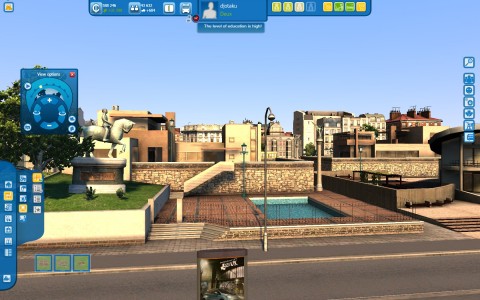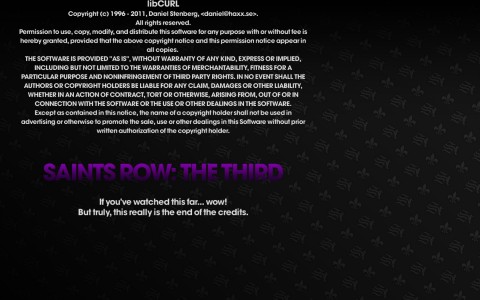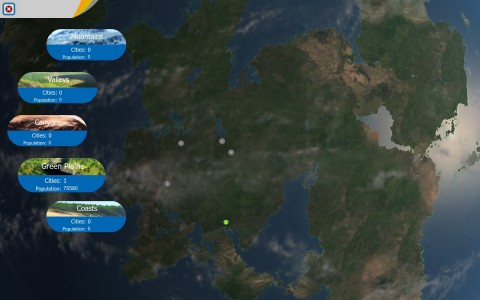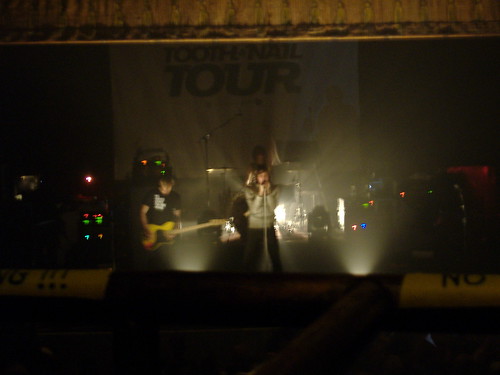Music Discovery and Acquisition
In light of the semi-recent news that most kids nowadays use Youtube to discover music and that leading to Youtube views being counted for music charts, I thought I’d talk about how I discover and/or acquire new music. For the record, the wife also uses Youtube to find new songs. It’s one of the first things she thinks of and I’m always left thinking “Oh yeah”. How I discover music to listen to depends on a few categories.
Photojojo for Late March to Early April
It’s once again time for my biweekly Photojojo post. For those of you who haven’t been following my blog for a long time, Photojojo is a digital time capsule service. Every two weeks they send me an email that has my most interesting photos posted to flickr from one year ago.
The biggest takeaway which is SOOOOO crazy is how much Scarlett has changed in just 1 year. Only 365 days. And she looks COMPLETELY different!
Cities XL Followup: I've Become Addicted
[caption id=“attachment_5996” align=“aligncenter” width=“480”]  Elites have some NICE houses in Cities XL[/caption]
Elites have some NICE houses in Cities XL[/caption]
I am really, really enjoying building up my city. There are new zoning densities that open up as you get more and more populous. For a while I was using a strategy similar to what’s going on in my in-law’s neighborhood - raze the single family homes to build apartments. Then later raze those to build sky-rises. But then I abandoned that for suburban sprawl since the map was so huge. As most people (I think) do in these city simulation games, I started off with an area similar to what happens in real life. In order to keep taxes low, you don’t want long roads separating your citizens from their jobs. So the first residential area is kinda dingy and exists near some really dirty industrial manufacturing. So I decided to build a nicer part of town, with more parks and cleaner air, across the river. However, they still needed to get to work, so traffic started building up on the bridge. So I had to make another and another and…..
March Video Game Report
[caption id=“attachment_5941” align=“aligncenter” width=“480”]  Saints Row: The Third - End Credits[/caption]
Saints Row: The Third - End Credits[/caption]
Saints Row: The Third (3 hrs) - I finished Saint’s Row: The Third in March. Overall, my enjoyment suffered a bit from a lack of play, but it was necessary due to planning for Scarlett’s birthday and starting a new semester of my graduate work. In the final mission you’re given a choice of pursuing Killbane or saving Shaundi. Angel de la Muerte asks you to go after Killbane because of their personal relationship, but I went after Shaundi because I thought that’s what my character would have done - he goes back with Shaundi way further than with Angel. Also, I was reading a walkthrough to help me get through the last mission as quickly as possible and (which influenced me to upgrade to the point where I could summon tanks and helicopters). So I knew I’d face off with Killbane in the Ganstas in Space DLC. The mission was awesome with “I need a hero” playing in the background as I raced to save her. It’s the perfect song for looping without getting annoying. But I felt the ending was way too anti-climactic. There isn’t even any fallout from Angel for having not chosen to pursue Killbane. Then I got to Gangstas in Space. The walkthrough I’d been reading didn’t mention it was essentially the movie the Third Street Saints were in. (I think it was mentioned throughout the game, but I’d forgotten) So while I DID faceoff with Killbane, it wasn’t a true battle.
In the Wake of SimCity Fiasco Another Look at CitiesXL
[caption id=“attachment_5961” align=“aligncenter” width=“480”]  My Cities XL Region - 1 city with 75 thousand residents[/caption]
My Cities XL Region - 1 city with 75 thousand residents[/caption]
I first played Cities XL in May of 2011. I last played a year ago in April 2012. At the time I said I couldn’t wait until Sim City came out. However, we know what a fiasco that has become. So, discouraged about playing Sim City I decided to load up Cities XL. This is the first one - not 2011, 2012, or Deluxe. The graphics are pretty amazing and rival anything in the current Sim City.
Last.fm 2013 Q1 Listening Habits
For this quarter I’ve gone back and forth between picking albums to listen to and having dynamic playlists determine what I listen to. For most of March I was listening to a bunch of free South by Southwest samplers with some pretty GREAT music. Not a lot of repeat among the artists there so none of them appear on this list. Some of those songs could potentially end up in the most listened song list at the end of the year.
San Francisco Trip Days 6 and 7: The Wedding (actually in Livermore) and Aftermath
The wedding day went the way these things always go. If you’re not involved you’re spending most of the day waiting around until it’s time to get your nice clothes on and go to enjoy the wedding. I went to get In-N-Out Burger for lunch and learned that Scarlett really, really likes french fries.
San Francisco Trip Day 5: Off to Livermore
Today’s post makes the series name somewhat inaccurate, hence the subtitle. We awoke and, having spent the week debating the best course of action, decided it made the most sense for us to all go to the airport to pick up the rental car since it cost the same to get out there whether it was just me or all of us. Additionally, we’d spend less gas than having me circle back around to pick up the girls.
San Francisco Trip Day 4
After confirming with Danielle that her family didn’t want breakfast, I went out for breakfast and saw the above mustachioed car. They’re for a service called Lyft that uses regular people as cab drivers. More about that here. The first time I learned about the way taxis are regulated was when I was at Cornell. In my experience, the taxis there were horrible. They were often late when they came at all and they charged per person rather than distance like most cabs. I wondered why someone didn’t come along and compete against them with better service. Well, because in most (if not all) jurisdictions Taxis are a regulated monopoly. The thing about monopolies is that not only do they not have an incentive to provide good customer service, they also don’t have an incentive to innovate. That’s part of why Lyft and Uber are so awesome - they have features like being able to track where your ride is - via your cell phone. You know how far they are and when to actually go outside. (Not like the many times I was freezing outside at Cornell waiting for the cabs, since they refused to call when they arrived) Then again, you’re putting your life into the hands of a random Joe. I know Taxis aren’t perfect and the ones in big cities sometimes drive like maniacs, but this nascent movement will probably die on the vine the first time someone gets kidnapped or murdered or something.
San Francisco Trip Day 3
[caption id="" align=“aligncenter” width=“375”]  Crazy boutique Hotel Diva Blackout Curtain[/caption]
Crazy boutique Hotel Diva Blackout Curtain[/caption]
We awoke wondering what shape Scarlett would be in. We were instructed to only give her Pedialyte or ginger ale. Scarlett, being her usual picky self, was having none of it. So we decided to try milk. She was OK. The vomiting was over.






